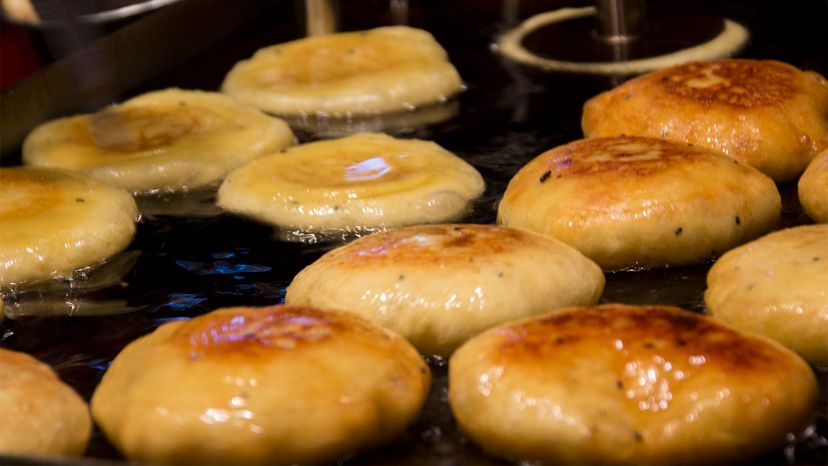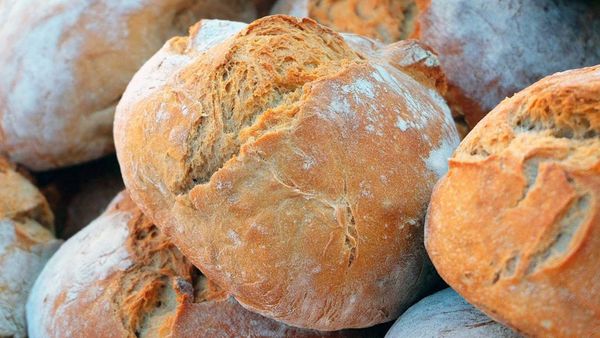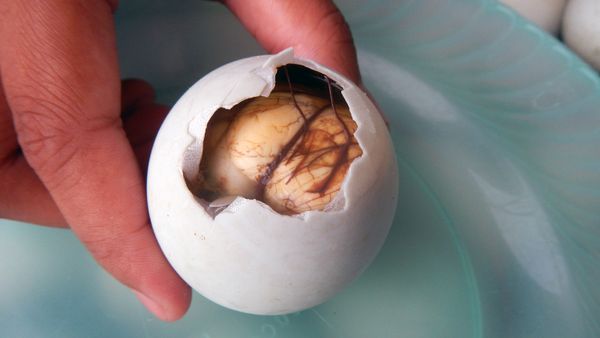
Hotteok, a panfried yeast dough that encases a sugary, gooey filling, is a popular sweet treat in Korea. Traditionally made by street vendors during cold winter weather, the scent of this ultimate comfort food — chewy on the inside and crispy on the outside — draws customers to hotteok stalls like a warm hug on a cold day.
Hotteok is believed to have been adapted from a crepe-like street vendor dish known as 'jian bing' that, as early as 1882, was brought to Korea by Chinese merchants and soldiers sent to aid in the war with Japan. While bing was a crepe-like pancake made with mung bean batter, by the 1950s and 1960s, Korean vendors were using a batter made of wheat flour, sweet rice flour, sugar and yeast to achieve the soft and chewy texture of hotteok. The hotteok dough would be wrapped around the filling, which was typically a mixture of brown sugar, cinnamon and ground peanuts, and then flattened on a griddle to brown both sides before serving.
Advertisement
This humble street food is experiencing a resurgence, showing up on trendy dessert menus and in home kitchens alike. While hotteok is nostalgic to some and a revelation to others, its preparation remains largely the same — although it is sometimes now deep-fried and cut open to insert the syrupy mixture of sugar, spices and nuts.
Hotteok that contains seeds, such as sesame and sunflower seeds, in place of peanuts is known as ssiat hotteok. In addition, there are a number of modern variations that feature savory fillings ranging from cheese or vegetables to red beans or japchae, which is a mixture of sweet potato noodles stir-fried with vegetables and meat. The dough itself is sometimes updated to include matcha, which is a finely ground powder made of green tea leaves.
At-home recipes for hotteok often skip the addition of sweet rice flour, sacrificing a bit of the chewiness of the dough. Nearly all home recipes call for the Korean pancakes to be eaten the same day for the best taste and texture, although they can be stored one or two days at room temperature and make a delectable next-day breakfast or after-school snack.
A caution for those eating hot-off-the-griddle hotteok: Beware of the molten filling, which is oh-so-delicious, but can burn the tongue.
Advertisement


